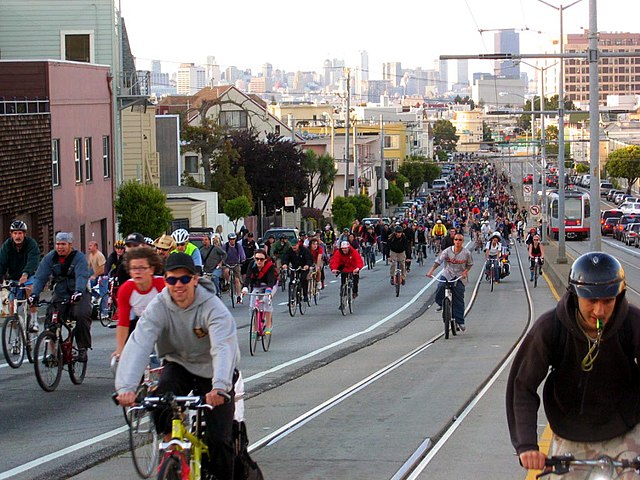Safety in numbers is the hypothesis that, by being part of a large physical group or mass, an individual is less likely to be the victim of a mishap, accident, attack, or other bad event. Some related theories also argue that mass behaviour can reduce accident risks, such as in traffic safety – in this case, the safety effect creates an actual reduction of danger, rather than just a redistribution over a larger group.
Critical Mass, San Francisco, April 29, 2005 and Muni Metro tram on J Church line
Amsterdam, 1982
In biology, any group of fish that stay together for social reasons are shoaling, and if the group is swimming in the same direction in a coordinated manner, they are schooling. In common usage, the terms are sometimes used rather loosely. About one quarter of fish species shoal all their lives, and about one half shoal for part of their lives.
These powder blue tangs are shoaling. They are swimming somewhat independently, but in such a way that they stay connected, forming a social group.
These bluestripe snapper are schooling. They are all swimming in the same direction in a coordinated way.
Schools of forage fish often accompany large predator fish. Here a school of jacks accompany a great barracuda.
A school of fish has many eyes that can scan for food or threats






